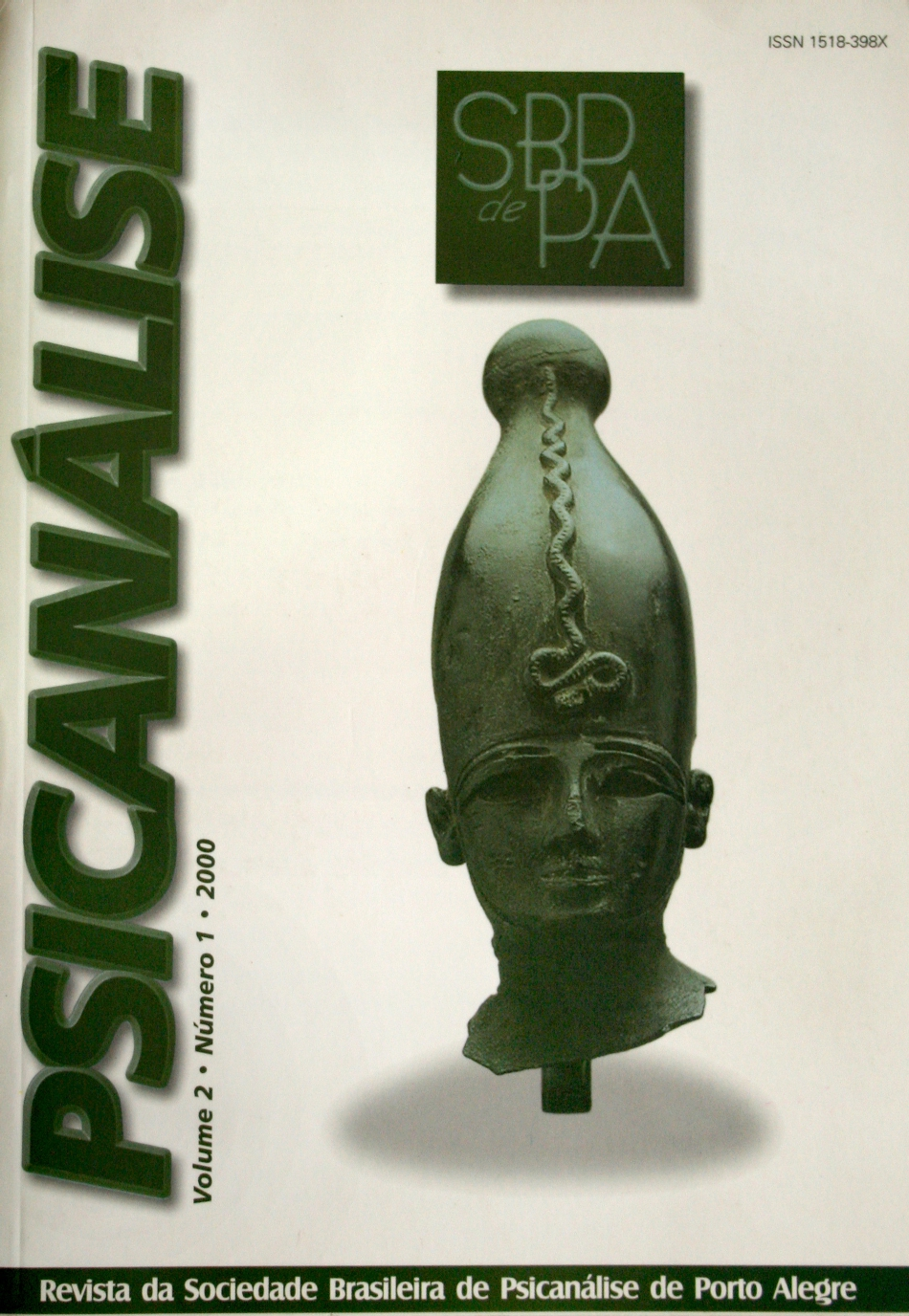Transferência e modelo estético
DOI:
https://doi.org/10.60106/rsbppa.v2i1.34Keywords:
Transference, Aesthetic conflict, Aesthetic model, Interpretation, MetacommunicationAbstract
Each mind model is derived from certain elements which combine constantly and are connected to the mind concept and each authors’ precocious emotional development theory. In this study we follow the course of Donald Meltzer, whorefers to S. Freud, M. Klein and W. Bion’s ideas regarding model. Its purpose is to articulate the Meltzerian transference concept with an emphasis on aesthetics – which is present in the author’s complete works – to attempt to propose a possible aesthetic mind model. From the notion that all theories grow from the obstacles they find, the possible difficulties in the use of the Kleinian-theological models which may have become starting points for the new proposed models are revised. This aesthetic model would have a specific truth concept and would also generate consequences so as to deal in psychoanalytic practices such as style interpretation, substantiated on the possibility to observe and describe, as well as in their contents
Downloads
References
BION, Wilfred R. (1970). Atención e Interpretación. Buenos Aires: Paidós, 1974.
BORGES, Jorge L. (1950). La muralla y los libros. In: Otras Inquisiones. Buenos Aires: Emecé, 1960.
FREUD, Sigmund (1895). Sobre la Psicoterapia de la Histeria. Buenos Aires:Amorrortu, 1980. v.2.
______. (1905). Fragmento de Análisis de un Caso de Histeria. Buenos Aires: Amorrortu, 1980.
______. (1914). Recordar, Repetir y Reelaborar. Buenos Aires: Amorrortu, 1980. v.12.
KANT, I. La Crítica del Juicio. Buenos Aires: Editorial Losada, 1961.
KLEIN, Melanie (1927). Symposium on Child Analysis. In: Love, Guilt and Reparation and Other Works. The Writings of Melanie Klein. Londres:Hogarth Press, 1981.
______. (1929). Personification in the Play of the Children. In: Love, Guilt and Reparation and Other Works. The Writings of Melanie Klein. Londres:Hogarth Press, 1981.
MELTZER, Donald (1967). The Psycho-Analytical Process. Pertshire: Clunie Press, 1979.
______. (1968). Studies in Extended Metapsychology. Pertshire: Clunie Press, 1986.
______. (1978). The Kleinian Development. Pertshire: Clunie Press, 1978.
______. (1988). The Aprehension of Beauty. Pertshire: Clunie Press, 1988.
______. (1990). Familia y Comunidad. Buenos Aires: Editorial Spatia, 1990.
______. (1992). The Claustrum. Pertshire: Clunie Press, 1992.
______. (1990). Conferencia. In: Psicoanálisis, Revista de la APDEBA, v.15, n.2, 1992.
MONEY-KYRLE, Roger (1977). On being a psychoanalist. In: The Collected Papers of Roger Money-Kyrle. Pertshire: Clunie Press, 1978.
PIRANDELLO, Luigi (1921). Seis personajes en busca de autor. Buenos Aires: Editorial Losada, 1997.
RILKE, Rainier Maria. Elegías de Duino. Buenos Aires: Torres Agüero, 1985.
Downloads
Published
How to Cite
Issue
Section
License
I attribute the copyrights that belong to me, on this work, to SBPdePA, which may use and publish it by the means it deems appropriate, including on the Internet or in any other computer processing.
















